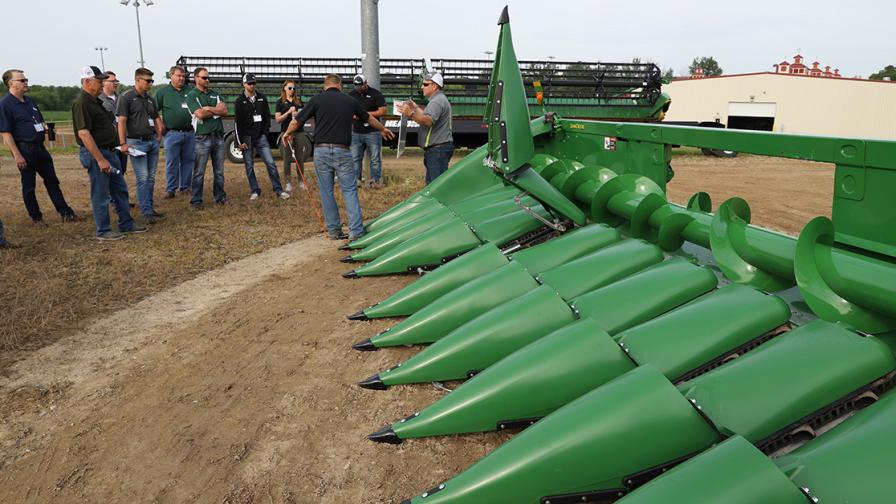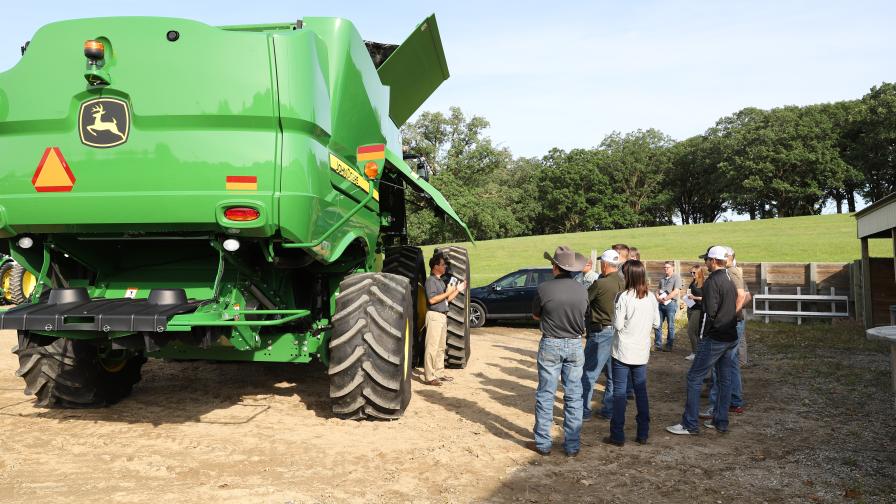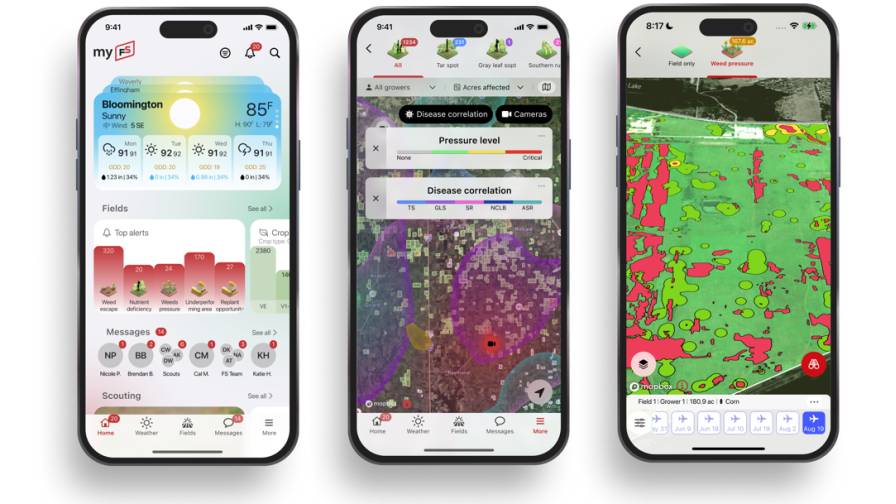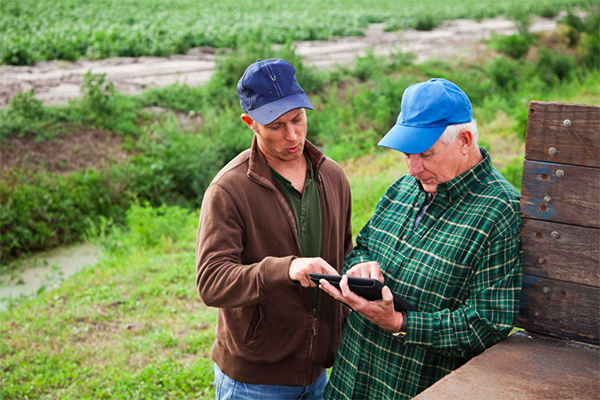Agricultural Equipment Dealerships: 7 Deadly Sins to Avoid with Customer Clinics

To design a clinic that will grab the attention of customers – and, equally important, potential customers – stay away from the seven deadly sins preventing you from having a dynamic clinic.
Editor’s note: This article originally published in March 2020.
Customer clinics are a great opportunity for precision or general equipment marketing. These events are almost synonymous with agricultural equipment dealerships and other companies related to the industry.
Clinics are common for good reason; they hold a lot of potential value – introducing newer aspects of available products and building relationships with growers are two great opportunities that come from hosting clinics. But if they’re done in a way that’s not engaging or value-driven for attendees, clinics can have the opposite effect.
To design a clinic that will grab the attention of customers – and, equally important, potential customers – stay away from the seven deadly sins preventing you from having a dynamic clinic. While most of this advice is coming through the eyes of an equipment dealership, others who host clinics, such as consultants, crop input suppliers, or even manufacturers can apply these tips to their events as well.
Sin #1: Only Talking About Sales Points

A discussion of how to pair agronomic strategies with equipment best practices is a great way to add value to an equipment-focused clinic.
It’s understandable that companies are proud of the products they offer. Equipment dealerships have close partnerships with manufacturers and trust in the equipment they offer. While there’s no shame in showing that excitement and highlighting a specific machine, and its features and benefits, allowing clinics to become overly-detailed and sales-focused is counter-effective.
Instead, consider the strategy of building clinics around a bigger-picture idea such as how agronomy and in-field practices can best complement the equipment. Instead of delivering a two-hour clinic on the advantages of a certain brand’s tillage equipment or technology, build an event where a member of the Natural Resource Conservation Services or Conservation District discusses STIR ratings and Soil Conditioning Index. Then, dedicated a short amount of remaining time to discuss the merits of the featured equipment with references directly to the STIR/SCI ratings.
This communicates the agronomic value of the equipment or technology and offers a better “selling” point than a features-and-benefits, hard-sell. Additionally, positioning a dealership as experts in more than the equipment solutions creates a stronger brand, as well as trust and respect among customers.
Sin #2: Not Creating Added Value
Closely related to, Sin #1, being self-centered with the clinic’s content is a big mistake. But failing to provide added value is a major miss. Attendees expect to learn at a clinic – that’s the ice cream. Going beyond the basics and offering them more value, something unexpected, is the sprinkles, hot fudge, and cherry on top. That little extra is what separates a bland-but-okay event from an exciting, satisfying one.
Clinics can be an opportunity to offer information and training that growers need on an annual basis. For example, at a sprayer clinic primarily focused on precision application and basic sprayer nozzle selection, the RDO team took the opportunity to weave in a discussion on reducing pesticide exposure. In partnership with Washington and Oregon state requirements, we were able to offer Pesticide License Recertification Education Credits to attendees.
Not all states offer recertification credits nor can every clinic incorporate this specific type of added value. However, hosts can offer other types of value-added material such as certification info, insight on an upcoming industry trend, or tips for information management. Even offering something as simple as lunch or snacks goes a long way in adding a little extra for those attending.
Sin #3: Missing the Full Picture

Go beyond showing precision technology and include an overview of how the technology is supported to help a customer realize the full picture of a partnership with your company.
Assuming that all clinics need to be a sales opportunity is falling short on attendees’ holistic experience. Creating a clinic that focuses on a company’s full offerings gives attendees a snapshot of the bigger picture they get from the partnership.
A dealership could speak on the new or innovative functions of the service and parts departments to further build trust and interest in the full spectrum of what’s offered. An example might be sharing data on the responsiveness of the service or parts department, or offering a better understanding of how it approaches precision ag support.
Don’t miss an opportunity to show value in the lesser-known aspects, often overlooked values of the organization.
Sin #4: Not Capitalizing on Team Members
The latest equipment is lined up. Great outlines are prepared to show the equipment’s agronomic advantage. There’s even a driving course to let customers get behind the wheel and see the technology at work. A great clinic may have all these key pieces, but what really matters is people.
Companies don’t buy from companies; people buy from people. A clinic is a great opportunity for face-to-fact interaction with grower customers and potential customers. Not only that, they’re a chance to highlight what makes a company’s team great.
A good dealership has knowledgeable sales person. A great dealership has knowledgeable sales person, parts person, service person, and all the staff can speak about the general topics of the products they sell.
Sin #5: Missing an Opportunity for Team members

While primarily customer-focused, clinics present a great training and learning opportunity for team members as well.
On the other side of things, customer clinics can also double as great training opportunities for team members. Educated, knowledgeable employees are crucial to every company, yet training opportunities can be time and cost-prohibitive.
This spring, RDO added team member training as a focus of customer clinics. At eight events, nearly 30 team members attend and received training. This totaled 58 training hours on fundamental concepts in areas like agronomy, sales, and the equipment.
Sin # 6: Assuming You Must be the Star of the Show
A great clinic needs at least one person sharing information, no doubt about that. However, think about the idea of letting attendees take more control on what they’re learning.
I think back to one of the greatest clinics we ever held at RDO. What made it the best? We were not the center of attention, the ones doing all the talking. We flipped it back on the attendees.
Five stations were set up: A new sprayer, new auto-steer features, telematics, Operations Center, and the latest harvest software. Attendees came, signed in, and right off the bat, shared with us their questions on equipment or equipment they planned to have in the future. Based on that conversation, they immediately went to one of the five stations we set up for a one-on-one discussion with one of our team members who could speak to those questions.
This format created an environment that allowed direct questions and answers, in a quiet, judgement-free zone. (Don’t forget, many people are nervous to raise their hand, speak up, and ask a question in a group environment.)
A clinic doesn’t always have to be a formal presentation; assembling the right team of experts can create a more personalized, valuable experience – and help build trust and relationships in the process.
Sin # 7: Having No Follow-up Plan
A successful event is two-part – what happens at the event and, just as important, what happens after. At its most basic, a follow-up plan should include capturing attendees’ contact info, then reaching out after to talk about their needs.
While a direct contact from a salesperson is likely expected after a clinic, a more customer-focused approach is to reference the information he or she learned, then ask them what they need next – or, better yet, offer them advice to make their life easier or a suggestion of what they might realistically need.
Did they learn about nozzle selections? Bring a quote out on how much it would cost to outfit their existing sprayer with better nozzle selections and recommendations of the proper nozzles to match their specific needs.
Was the clinic focused on helping them create a more cost-effective crop input strategy? Consider creating a simple crop input calculator they could use to determine cost of production per acre and help make their next purchase easier.
To maximize the potential of customer clinics, don’t just make them good events – make them great events.






